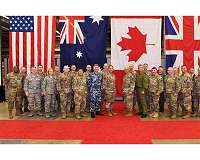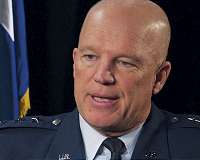Kwast argues that the scientists, engineers, historians, and strategists of today have been pushing the U.S. Congress to more heavily and more rapidly fund the Space Force and associated technologies, but there is still some pushback and confusion as to why these are presently needed. Kwast ultimately makes the case that the
United States must be able to bring kinetic power, non-kinetic power, and informational power to the battlefield cheaper and faster than its adversaries in order to ensure strategic advantage in space.
Around the 12:00 mark in the speech, Kwast makes the somewhat bizarre claim that the U.S. currently possesses revolutionary technologies that could render current aerospace capabilities obsolete:
"The technology is on the engineering benches today. But most Americans and most members of Congress have not had time to really look deeply at what is going on here. But I’ve had the benefit of 33 years of studying and becoming friends with these scientists. This technology can be built today with technology that is not developmental to deliver any human being from any place on planet Earth to any other place in less than an hour."
Kwast’s comment is only one of several
curious comments made by
military leadership lately and they do seem to claim that we could be on the precipice of a great leap in transportation technology. We also don't know exactly where he is coming from on all this as it is not necessarily the direct wheelhouse of someone who was running the Air Force's training portfolio, although it does have overlaps. Whether or not the revolutionary aerospace technologies Kwast mentions have actually been developed is one thing, but Kwast’s lecture, his recent op-eds, and his supporters make it clear that there are many within the U.S. military and analyst community who have felt that there is a great need to boost investment in American space technologies and the U.S. military’s presence in space. That vision is certainly taking root across the Defense Department.
Is all this setting the stage for a new space race that will benefit mankind by furthering scientific and technological development, or is it ushering in the conditions for the first great space war? Only time will tell, but according to Kwast, the technologies needed to win that war may be more science fact than fiction.

 sputniknews.com
sputniknews.com





